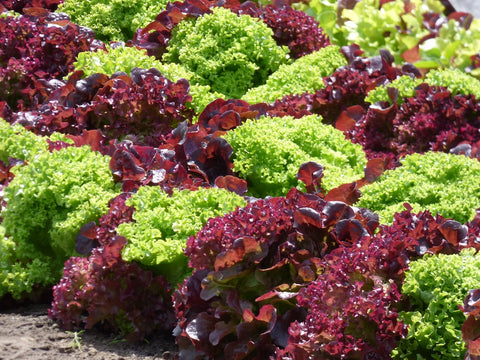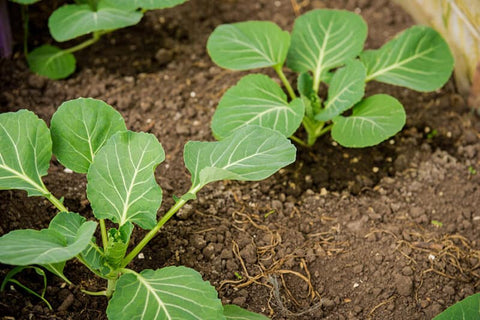Marigolds, with their vibrant hues and distinct aroma, are cherished by gardeners worldwide for their beauty and versatility. These resilient flowers not only adorn gardens with their cheerful blooms but also play a vital role in pest control and soil health. In this comprehensive guide, we will explore the art of growing and caring for marigolds, covering everything from understanding their varieties to mastering cultivation techniques. By the end of this article, you'll be well-equipped to nurture thriving marigolds in your garden sanctuary.

- Understanding Marigold Varieties
- Selecting the Right Location
- Planting Marigold Seeds
- Watering Marigolds
- Fertilizing Marigolds
- Pruning and Deadheading
- Managing Pests and Diseases
- Supporting Marigolds
- Companion Planting with Marigolds
- Harvesting Marigolds
- Conclusion
Understanding Marigold Varieties
Marigolds come in various shapes, sizes, and colors, each with its unique characteristics and growing requirements. Here are the main types:
French Marigolds (Tagetes patula)
French marigolds are compact plants with intricate, lacy foliage and small, brightly colored flowers. They are ideal for borders, edging, and containers, adding a burst of color to any garden landscape.
African Marigolds (Tagetes erecta)
African marigolds are known for their large, showy blooms and tall, upright growth habit. With their bold colors and long stems, they make excellent cut flowers and focal points in garden beds and borders.
Signet Marigolds (Tagetes tenuifolia)
Signet marigolds are compact, low-growing plants with finely divided foliage and small, dainty flowers. They are perfect for mass plantings, hanging baskets, and window boxes, providing a delicate touch to any garden space.
Other Lesser-known Varieties
In addition to the main types, there are several lesser-known varieties of marigolds, each with its unique traits and growing habits. These include the Inca marigold (Tagetes minuta), known for its strong aroma and medicinal properties, and the Mexican marigold (Tagetes lucida), prized for its culinary uses and insect-repellent properties.
Selecting the Right Location
Choosing the right location is crucial for the success of your marigold plants. Consider the following factors:
Sunlight Requirements
Marigolds thrive in full sun, requiring at least six to eight hours of direct sunlight per day to bloom profusely. Choose a sunny spot in your garden with ample sunlight exposure to ensure healthy growth and abundant flowering.
Soil Preferences
Marigolds prefer well-drained, fertile soil with a slightly acidic to neutral pH. Amend heavy clay soils with organic matter such as compost or aged manure to improve drainage and soil structure. Avoid planting marigolds in waterlogged or compacted soils, as this can lead to root rot and poor growth.

Climate Considerations
Marigolds are warm-season annuals that thrive in temperatures between 70°F and 80°F (21°C to 27°C). While they can tolerate a wide range of climates, they perform best in regions with long, hot summers and mild winters. If you live in a cooler climate, start seeds indoors or wait until after the last frost date to plant marigolds outdoors.
Planting Marigold Seeds
Planting marigold seeds is relatively straightforward, but proper timing and techniques are essential for success. Follow these steps for successful seed planting:
Timing for Planting
Wait until after the last frost date in your area before planting marigold seeds outdoors. In regions with short growing seasons, start seeds indoors 6 to 8 weeks before the last frost date to give them a head start on the growing season.
Seed Preparation
Before planting, scarify or nick the seed coat to improve germination rates. You can do this by gently rubbing the seeds with sandpaper or nicking them with a sharp knife. Soak the seeds in warm water for 24 hours before planting to soften the seed coat and promote faster germination.
Planting Techniques
Prepare the planting site by loosening the soil to a 6 to 8-inch depth and removing any weeds or debris. Sow the seeds directly into the soil at a depth of ¼ to ½ inch, spacing them 6 to 12 inches apart, depending on the variety. Water the soil thoroughly after planting to ensure good seed-to-soil contact and promote germination.
Watering Marigolds
Proper watering is essential for the health and vitality of marigold plants. Follow these guidelines for watering your marigolds:
Watering Frequency
Water marigolds deeply and infrequently, allowing the soil to dry out slightly between watering sessions. Avoid overwatering, as this can lead to root rot and other water-related issues. Check the soil moisture regularly and adjust your watering schedule as needed based on weather conditions and plant requirements.
Watering Techniques
Water the soil around the base of the plants rather than overhead to avoid wetting the foliage, which can increase the risk of fungal diseases. Use a watering can or hose with a nozzle attachment to deliver water directly to the root zone, ensuring thorough saturation without causing waterlogging.
Avoiding Water-related Issues
To prevent water-related issues such as root rot and damping-off, ensure proper drainage in the planting area and avoid overwatering. Mulch around the base of the plants with organic material such as straw or wood chips to help retain soil moisture and suppress weeds.
Fertilizing Marigolds
Feeding your marigolds with the right nutrients is essential for promoting healthy growth and vibrant blooms. Follow these tips for fertilizing your marigold plants:
Importance of Fertilization
Marigolds are heavy feeders that benefit from regular fertilization throughout the growing season. Fertilizers provide essential nutrients such as nitrogen, phosphorus, and potassium, which are necessary for plant growth, flowering, and overall health. A well-balanced fertilizer with equal parts of these nutrients is ideal for marigolds.
Types of Fertilizers
Choose a fertilizer specifically formulated for flowering plants or vegetables, with a balanced NPK ratio (e.g., 10-10-10 or 20-20-20). Alternatively, use organic fertilizers such as compost, aged manure, or fish emulsion, which provide slow-release nutrients and improve soil fertility over time.
Fertilizing Schedule
Apply fertilizer to your marigold plants every 4 to 6 weeks during the growing season, starting in early spring and continuing until late summer or early fall. Follow the manufacturer's instructions for dosage and application methods, and avoid over-fertilizing, as this can lead to excessive foliage growth at the expense of flowering.

Pruning and Deadheading
Regular pruning and deadheading help maintain the health and appearance of marigold plants while promoting continuous blooming. Follow these tips for pruning and deadheading marigolds:
Benefits of Pruning
Pruning helps remove dead, diseased, or damaged foliage, which can attract pests and diseases and inhibit plant growth. It also promotes air circulation and sunlight penetration, reducing the risk of fungal diseases such as powdery mildew and botrytis.
Deadheading Techniques
Deadheading involves removing spent flowers from the plant to encourage the development of new blooms. Use clean, sharp scissors or pruning shears to snip off faded flowers just above a leaf node or stem junction. Deadheading prevents the plant from diverting energy into seed production, resulting in more prolific flowering throughout the season.
Pruning Tips for Healthy Growth
In addition to deadheading, prune back leggy or overgrown stems to maintain a compact, bushy growth habit. Remove any yellowing or diseased foliage promptly to prevent the spread of disease and promote overall plant health. Avoid pruning more than one-third of the plant's foliage at a time to avoid stressing the plant.
Managing Pests and Diseases
While marigolds are relatively pest and disease-resistant, they can still fall victim to common garden pests and diseases under the right conditions. Follow these tips to manage pests and diseases effectively:
Common Pests
Keep an eye out for common pests that may affect marigolds, such as aphids, spider mites, and whiteflies. Check the undersides of leaves and along stem joints for signs of infestation, such as yellowing foliage, distorted growth, or sticky honeydew residue. Use insecticidal soap, neem oil, or other natural pest control methods to manage pest populations effectively.
Natural Pest Control Methods
Encourage beneficial insects such as ladybugs, lacewings, and parasitic wasps, which prey on common garden pests and help keep their populations in check. Planting companion plants such as basil, dill, and fennel can also attract beneficial insects to your garden and reduce pest pressure on marigolds.
Disease Prevention Strategies
Preventive measures such as proper plant spacing, good air circulation, and regular sanitation can help prevent the spread of fungal diseases such as powdery mildew, botrytis, and damping-off. Avoid overhead watering, which can wet the foliage and create favorable conditions for fungal growth. Remove and destroy any infected plant material promptly to prevent the spread of disease to healthy plants.
Supporting Marigolds
Tall varieties of marigolds may require support to prevent them from bending or breaking under their weight. Follow these tips for supporting marigold plants:
Importance of Support
Provide adequate support for tall varieties of marigolds to prevent stem breakage and promote upright growth. Staking, trellising, or using plant cages can help support the plants and keep them standing tall throughout the growing season.
Support Structures
Choose support structures that are sturdy and tall enough to accommodate the height of your marigold plants. Bamboo stakes, metal stakes, and wire cages are popular options for supporting tall varieties, while shorter varieties may only require minimal support or none at all.
Installation and Maintenance
Install support structures before or shortly after planting to avoid disturbing the roots or damaging the plants. Secure the plants to the supports with soft twine or plant ties, taking care not to tie them too tightly to allow for natural growth and movement. Check the supports regularly throughout the growing season and adjust them as needed to provide optimal support for the plants.

Companion Planting with Marigolds
Companion planting involves growing different plants together to benefit each other in various ways. Here are some plants that benefit from marigold companionship:
Plants that Benefit from Marigold Companionship
Marigolds are known for their insect-repellent properties, making them excellent companions for a variety of garden plants. Vegetables such as tomatoes, peppers, and eggplants are particularly susceptible to pests such as aphids, whiteflies, and nematodes, which marigolds can help deter.
Planting Arrangements for Companion Planting
Interplant marigolds with companion plants throughout your garden beds and borders to create a natural barrier against pests and promote overall plant health. Mix tall and short varieties of marigolds with a variety of companion plants to maximize the benefits of companion planting and create a diverse and thriving garden ecosystem.
Harvesting Marigolds
Knowing when and how to harvest marigolds ensures you'll enjoy a bountiful supply of blooms throughout the growing season. Follow these guidelines for harvesting marigolds:
Signs of Ripeness
Harvest marigold flowers when they are fully open and vibrant in color, usually in the morning when their fragrance is most potent. Look for flowers with firm, plump petals and bright, uniform colors, indicating peak ripeness and freshness.
Harvesting Techniques
Use clean, sharp scissors or pruning shears to snip the stems just above a leaf node or stem junction. Cut the flowers early in the morning when the plants are well-hydrated, avoiding harvesting during the heat of the day when the flowers may wilt quickly. Place harvested flowers in a clean bucket or vase filled with water to keep them fresh until you're ready to use them.
Post-Harvest Care
Remove any foliage or thorns from the lower stems of the flowers before placing them in water to prevent bacterial growth and keep the water clean. Change the water every 2 to 3 days and trim the stems at an angle every few days to ensure optimal water uptake and prolong the vase life of the blooms. Display marigold flowers in a cool, bright location away from direct sunlight and drafts to maximize their freshness and longevity.
Conclusion
Marigolds are more than just garden staples—they're golden guardians that bring beauty, fragrance, and pest-repelling properties to your outdoor space. By understanding their diverse varieties and mastering the art of their care, you can cultivate thriving marigold plants that brighten your garden and enrich your gardening experience. So go ahead, plant some marigolds, and watch your garden come alive with color and vitality!









